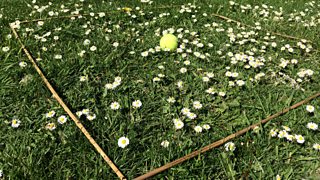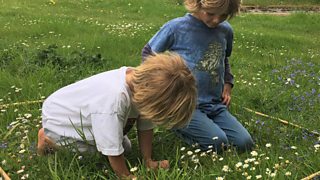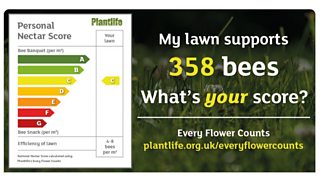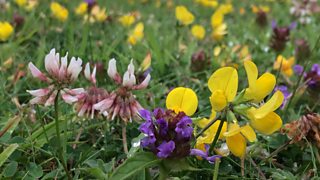How many bees can your lawn feed?
Trevor Dines
Plantlife contributor to Ö÷²¥´óÐã Springwatch blog
Fancy something fun and quick to do on your lockdown lawn that will contribute to the national picture of how important our lawns are for bees? Of course you do…
Plantlife’s Every Flower Counts - Britain’s largest annual citizen science survey of the nation’s lawns – is well underway this week. In the glorious sunny weather, people are getting out with a few sticks, canes, broom handles, a tape measure and a ball to find out how many bees their lawns can feed.

A one metre quadrat placed on a lawn ready for counting copyright Trevor Dines Plantlife
It’s great fun to do and very simple; you throw the ball to select a random patch of lawn, put down four one-metre long canes, sticks or anything else that comes to hand to form a square quadrat, and then just spend five minutes counting up all the daisies, dandelions, speedwells and whatever else you find in flower. Count several quadrats if you can – they’re so easy - and it’s very meditative to take a closer look at what’s happening amidst the green.

Two boys counting daisies in a quadrat copyright Archie Thomas Plantlife
Pop your results into and you will immediately get your Personal Nectar Score, telling you how much lovely nectar your lawn is producing and how many bees it can feed.

Last year, daisies were kings of the lawn, with over 191,000 individual flowers counted and an average of 39 flowers per square metre. Despite their abundance, though, they’re not top of the nectar league. That accolade falls to white clover, with dandelion coming in a close second.

Mass of daisies in a lawn copyright Trevor Dines Plantlife
Once all your results are in, we combine them to produce a National Nectar Score – an indication of how important all our lawns are for pollinators. Last year, we discovered that the average lawn produced enough nectar to feed 1,088 bees per day. Together, all the lawns in the survey produced a whopping 24 kilograms of nectar sugar per day, enough to feed 2.1 million honeybees.

Short grass lawn with bird's foot trefoil selfheal and clover copyright Trevor Dines Plantlife
That’s an enormous feast for our pollinators, but nectar production depends very much on how often we mow our lawns. Surprisingly, we found that short lawns mown once a month produced the most nectar, but areas of unmown grass left to grow longer had a wider range of plants providing more choice for pollinators. Plantlife now recommends adopting a Mohican style hair-cut: a monthly buzz-cut for short plants like clover, selfheal and bird’s-foot-trefoil, while leaving areas of longer, uncut grass with tall plants like knapweed, field scabious and wild carrot. This way, you’ll be maximizing benefits to wildlife.
What will we find this year? With hardly any rain since March, can we beat the National Nectar Score? Over time, we want to build up a picture of how weather affects flowering and nectar production on our lawns. Will daisies triumph again or will buttercups or clover take the title? There’s only one way to find out!
The Every Flower Counts survey is running this week, until Sunday 31st May. To take part, please visit .
